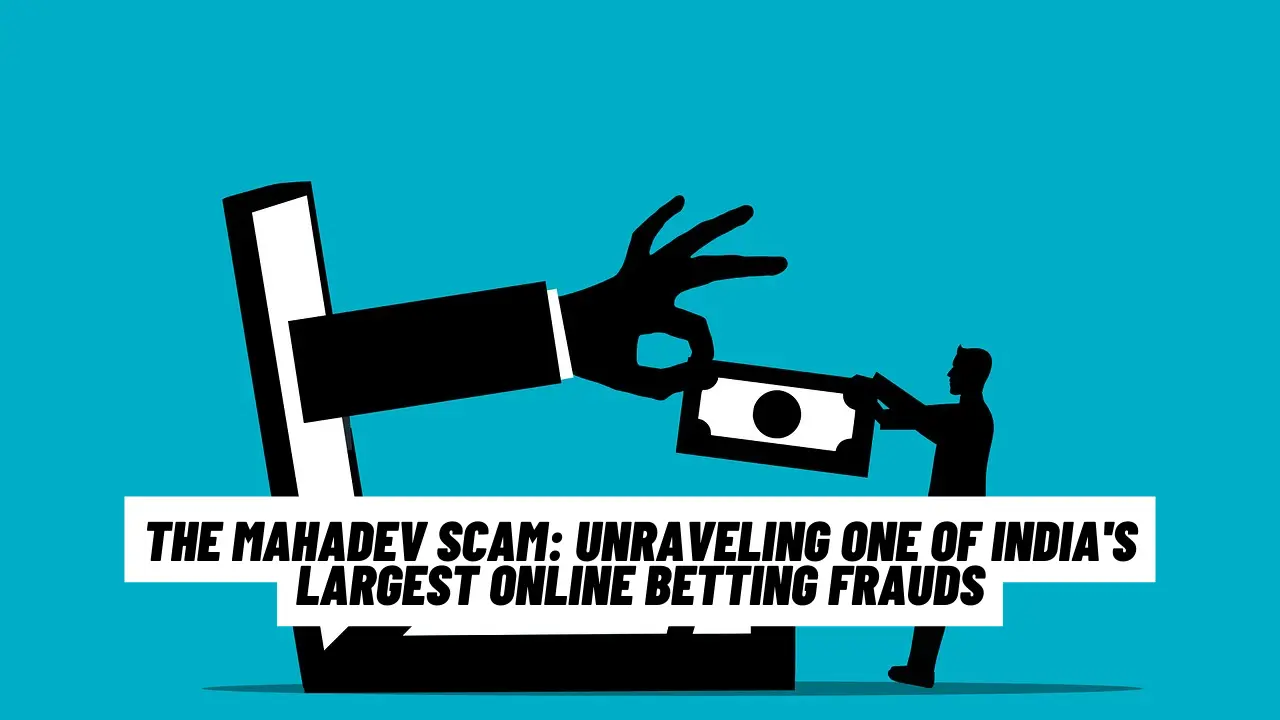In a shocking revelation, the Mahadev online betting platform has been exposed as one of the most extensive and sophisticated frauds in India’s digital landscape. Known as the Mahadev Scam, this elaborate scheme has defrauded thousands of users across the country, leading to widespread financial losses and raising serious concerns about the regulation of online betting activities in India.
Unveiling the Scam
The Mahadev platform, which was presented as a legitimate online betting application, attracted a vast number of users with its polished interface and a wide array of betting options. Promising high returns and offering an enticing mix of sports betting, casino games, and other gambling activities, Mahadev quickly became a popular choice for many looking to try their luck online. However, beneath its shiny exterior, the platform was meticulously rigged to ensure that users consistently lost money.
How It Worked: The Mechanics of Deception
- Appealing User Experience:
- Mahadev Book’s interface was designed to look professional and trustworthy, mimicking legitimate betting sites and applications. This facade played a crucial role in attracting and retaining users.
- Variety of Betting Options:
- Users were presented with a diverse range of betting opportunities, from sports and casino games to lotteries. This wide selection was a strategic move to cater to a broad audience and keep them engaged.
- Attractive Promotions:
- The platform lured users with compelling sign-up bonuses, referral rewards, and seemingly lucrative promotions. These incentives were crafted to encourage initial deposits and foster a sense of trust and opportunity.
- Manipulated Outcomes:
- Once users placed their bets, the platform manipulated odds and outcomes, ensuring the house (the fraudsters) always had the upper hand. This manipulation was subtle enough to maintain the illusion of fairness while systematically draining users’ funds.
- Complex Withdrawal Procedures:
- Users who attempted to withdraw their winnings faced convoluted and restrictive withdrawal policies, making it nearly impossible to retrieve their money. These barriers were intentionally set up to discourage cash-outs and prolong user engagement.
- Data Exploitation:
- Beyond financial losses, the platform also engaged in phishing activities, collecting sensitive personal and financial information from users. This data was then exploited for further fraudulent activities.
The Impact: Scope and Consequences
The Mahadev Scam’s reach was vast, with thousands of individuals falling victim to the scheme. Estimated losses are believed to run into millions of dollars. The financial devastation was compounded by the emotional toll on victims who trusted the platform with their hard-earned money.
The Investigation: How the Scam Was Exposed
- User Complaints and Red Flags:
- The scam began to unravel when users started reporting issues with withdrawals and suspicions about the fairness of betting outcomes. These complaints caught the attention of law enforcement and regulatory bodies.
- Media Spotlight:
- Investigative journalists played a pivotal role in uncovering the details of the scam, bringing it to national attention. Media coverage helped expose the extent of the fraud and mobilized public awareness.
- Regulatory and Legal Actions:
- Authorities launched a thorough investigation into the Mahadev platform, leading to the identification and arrest of several key figures behind the scam. However, given the digital and often anonymous nature of the operation, many perpetrators remain at large.
Broader Implications: What the Scam Reveals
- Regulatory Gaps:
- The Mahadev Scam has highlighted significant gaps in the regulatory oversight of online betting and gambling in India. The lack of stringent regulations allowed the scam to flourish unchecked for a considerable period.
- Need for Consumer Protection:
- The scam underscores the urgent need for robust consumer protection measures in the digital realm. Users must be safeguarded against fraudulent schemes through better regulatory frameworks and enhanced digital literacy.
- Financial and Emotional Impact:
- Beyond financial losses, victims of the scam have suffered considerable emotional distress. The betrayal of trust and the loss of savings have left a lasting impact on many individuals and families.
- Calls for Reform:
- In the wake of the scam, there have been calls for comprehensive reforms in the regulation of online betting platforms. Stakeholders are advocating for stronger oversight and clearer guidelines to prevent similar frauds in the future.
Preventive Measures: Protecting Yourself from Online Betting Scams
- Verify Platform Legitimacy:
- Before engaging in online betting, thoroughly research and verify the legitimacy of the platform. Look for reviews, check regulatory licenses, and be wary of platforms with too-good-to-be-true offers.
- Exercise Caution with Promotions:
- Be cautious of platforms that offer unusually generous promotions and bonuses. These could be tactics to lure you into depositing money.
- Understand Withdrawal Policies:
- Always read and understand the withdrawal policies of any betting platform. Avoid platforms with complex or restrictive withdrawal procedures.
- Protect Personal Information:
- Be vigilant about sharing personal and financial information online. Use strong, unique passwords and enable two-factor authentication whenever possible.
- Report Suspicious Activities:
- If you encounter any suspicious activities or believe you have been a victim of a scam, report it to the relevant authorities immediately.







